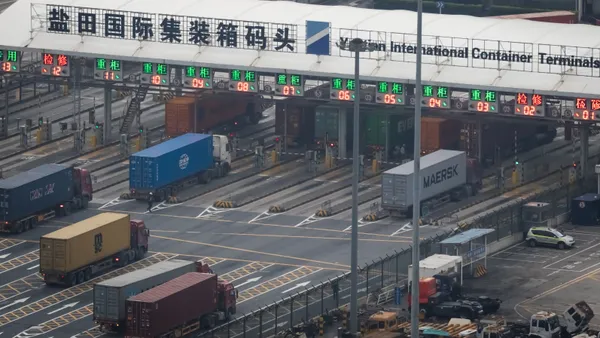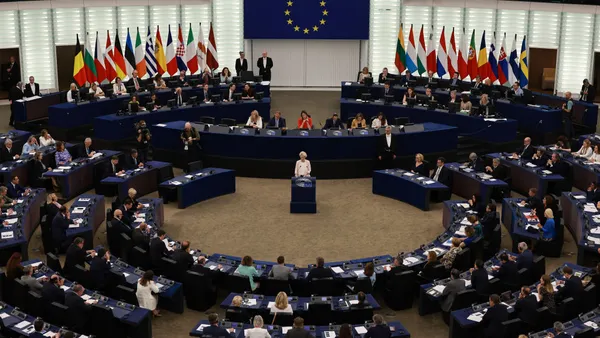Dive Brief:
- Levi Strauss & Co. is moving away from a primarily owned-and-operated distribution logistics network in the U.S. and Europe to one that includes third-party logistics providers, according to a June 27 earnings call.
- The shift to a hybrid distribution and logistics model aims to leverage third-party capital to invest in its direct-to-consumer channels while reducing fulfillment costs per unit, Financial and Growth Officer Harmit Singh said.
- “As we continue our pivot to a DTC first company, our distribution networks need investment including upgrading existing capacity with omni-channel capabilities,” Singh told analysts.
Dive Insight:
Levi’s shift follows several other companies who have re-evaluated their fulfillment strategies in a bid to gain greater control over their operations or trim expenses. While a perfect approach to fulfillment doesn’t exist, operational needs, demand swings and shipping disruptions are just a few of the factors businesses are taking into consideration.
For instance, DavidsTea split from its existing fulfillment service provider in 2023 to insource its operations. While the company saw lower revenues at first, DavidsTea saw gross profit increase due to the lower cost per unit driven by internalizing its fulfillment operations.
In Levi’s case, the hybrid fulfillment model aims to give the brand room to focus on its larger DTC strategy while slashing costs. The company’s distribution model has been top of mind as Levi’s looks to optimize supply chain operations.
In 2023 the apparel company noted that operating its distribution centers had been rough due to elevated inventory levels at the time. Since then, Levi’s has made significant progress on working through its stock.
Last year, Levi’s also opened a more than 575,000-square-foot e-commerce fulfillment center in Kentucky to serve East Coast e-commerce orders. The opening was part of a larger effort to bring more of the retailer’s U.S. e-commerce business in-house while driving growth in its DTC business.
As Levi’s continues to optimize its fulfillment operations, the new hybrid model will continue to benefit healthier inventory levels and increase profitability.
“Importantly, this channel is significantly more profitable than last year, amplified by our healthier inventory levels and the improvement in our supply chain operations,” President and CEO Michelle Gass told analysts.












